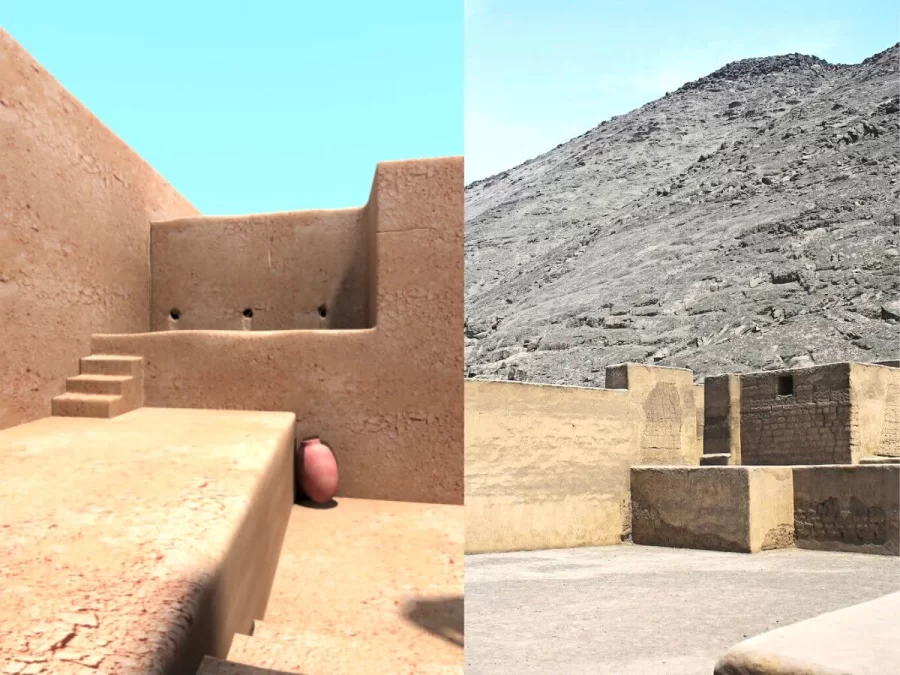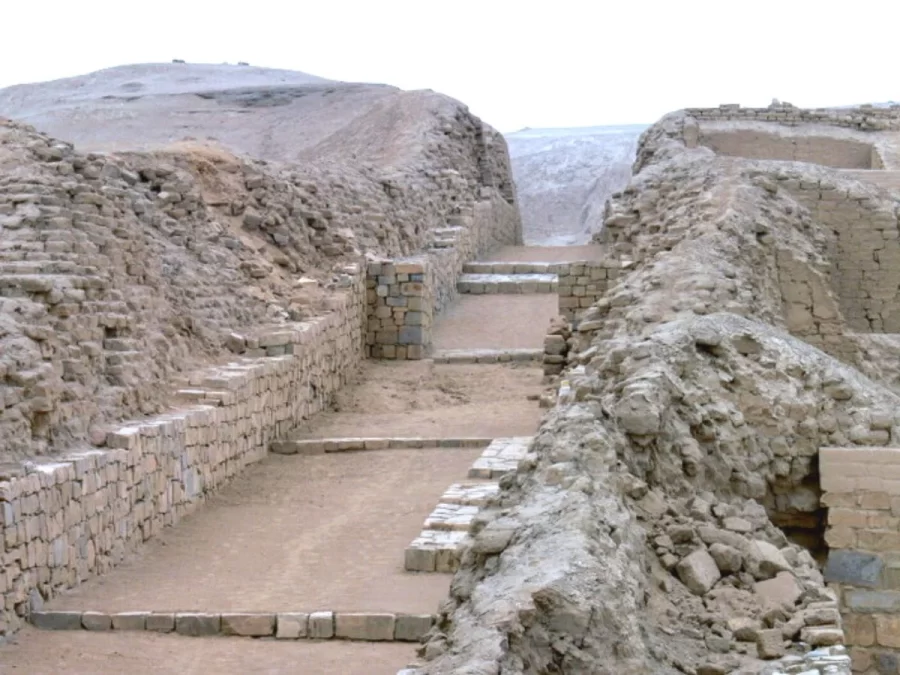The archaeological complex Puruchuco also known as "The Palace", is one of the most beautiful and best preserved complexes of the Peruvian coast.
In the city of Lima, it is a historical complex that is very close to the city of Lima and that you can visit during your next trip to Peru.
Table of Contents
The complex called Puruchuco was built during the time of the Incas, and was the residence of the Curaca of the area and his family.
The palace being the residence of the Curaca Ruler, also served as a center for the collection of products for the redistribution of the same with the people, as well as part of the complex was intended for religious rituals.
Throughout the complex there is a mixture of traditional Ychsma and Inca architecture, preserving the construction techniques in pyramidal style with ramps, using the materials of the area also preserved techniques to build the walls, called "Tapial", while the Inca presence is manifested in the trapezoidal openings and double jamb doors, which is very characteristic of the sacred and religious Inca sites.
With the archaeological investigations, it was found "Quipus" which are a sample of the Inca influence, regarding the administrative management of the production of the population of Puruchuco.

Currently, archaeologists divide the architectural buildings of Puruchuco in 4 sectors:
These patios were used as religious ceremonies, in which the people could participate, as well as for celebrations of joy, as well as the curaca received the tributes and the redistribution of products, this theory is supported by the finding of quipus and scales in this area.
This is a private space which is accessed by a single ramp with 6 triangular niches on the side, these could have served as a small calendar to mark seasons, according to the shadows that the sun casts on them.
These triangular niches are now the most representative symbol of Puruchuco.
This sector was used to prepare the food that would be stored in the warehouses, part of the evidence found in the place, is a fulling mill used to grind grains, as well as dry corn cobs.
It is known that in pre-Columbian times, a great part of the production was stored, by means of drying the products, as well as the dehydration of meats "charqui" and tubers (chuño and moraya) to be able to have supply in seasons of drought and to avoid to go through famines.

Among the multiple vestiges that were found in Puruchuco stand out:
These ruins are located within the city of Lima, in the District of Ate.
Additionally, it has the Arturo Jimenez Borja Site Museum, where you can find in exhibition all the pieces found during the investigations in Puruchuco.
Ticket prices are as follows
The Puruchuco complex was built during the XV century approximately, with the architectural influence of two important cultures, the Ychmas and the Incas.
Preserving clear characteristics of both civilizations, which makes Puruchuco a unique place in terms of its architectural constitution.
During the years 1953 to 1960 Doctor Arturo Jimenez Borja, carried out the first cleaning and restoration works in Puruchuco, inaugurating also the museum of Site of the same one, leaving in exhibition the pieces found in the place, during the restorations of the place.
